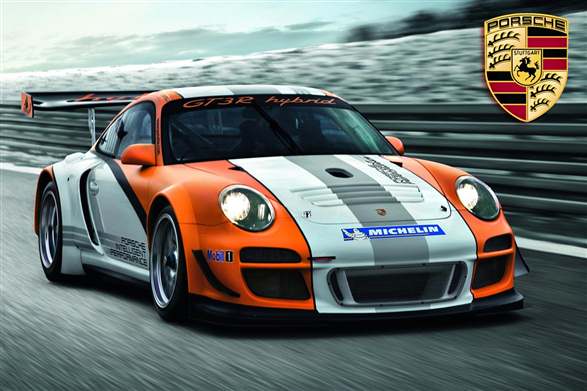After coming close to victory in last year’s race with their first ever 911 hybrid, Porsche are taking on the Nurburgring 24-Hour race again with a new, upgraded and lighter version.
Whilst Porsche have been working hard to produce a hybrid model for their range of road cars, they have also been pushing hard to improve the hybrid 911 which performed so well in the famous 24-hour race last year. The company are hoping that this year’s upgraded 2.0 model will be able to lap the race in the same time that they managed last year, but with a lower fuel consumption. The Nurburgring race takes place on the 25-26 June this year.
Building on last year’s hybrid 911, the 2.0 version features components with a substantial 20% weight reduction, meaning that the total weight of the car is down from last year’s 1,350kg to just 1,300kg this year.
The basic engine construction will remain the same, with a 4.0-litre flat six engine providing 464bhp to the rear wheels, while two additional electric motors provide intermittent propulsion to the front wheels. This additional power is activated automatically by the throttle, but can also be called upon by the driver to give the car an extra kick whilst leaving slow corners, when overtaking, and perhaps also for use in reducing oversteer by pulling the car back to straight with a brief injection of power.
Whilst the electric motors in Porsche’s first 911 hybrid provided 80bhp each, this year’s upgraded motors are capable of 101bhp each, meaning that there is an extra 202bhp for the driver to call upon. The flywheel which drives the hybrid system will remain in the same location as last year – next to the driver in the position where the passenger seat would usually be. This flywheel spins at up to 40,000rpm and is housed within a carbon fibre safety cell. It is recharged every time the driver hits the brakes.
And it is not just the hybrid system which has been upgraded for the 2.0 version. Designers have also given the body a makeover to improve the aerodynamics of the car, removing the large vents which were located in front of the wheel-arches in the original 911 hybrid. Inside the car, the ergonomics have also been improved by moving both the display and controls onto the steering wheel.
Related used car searches
Search used Porsche
Search used Porsche
Search used Porsche 911








